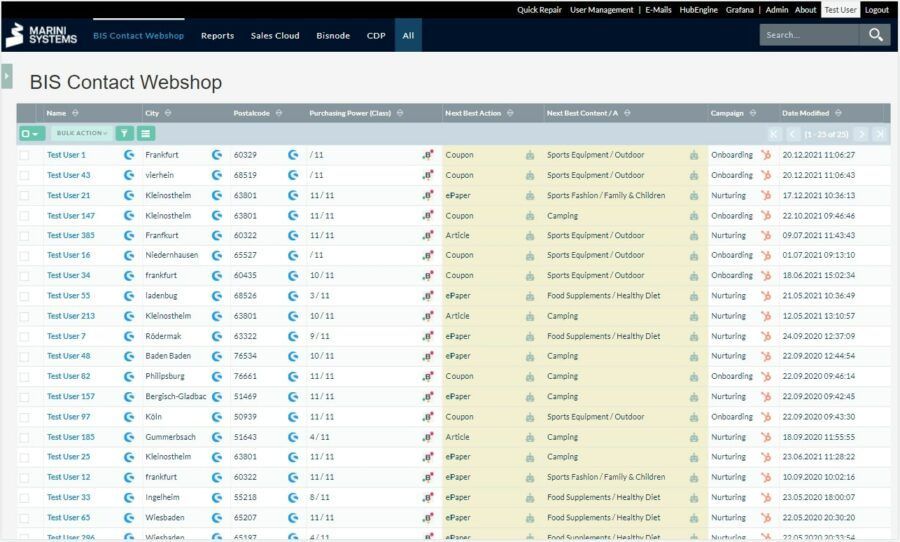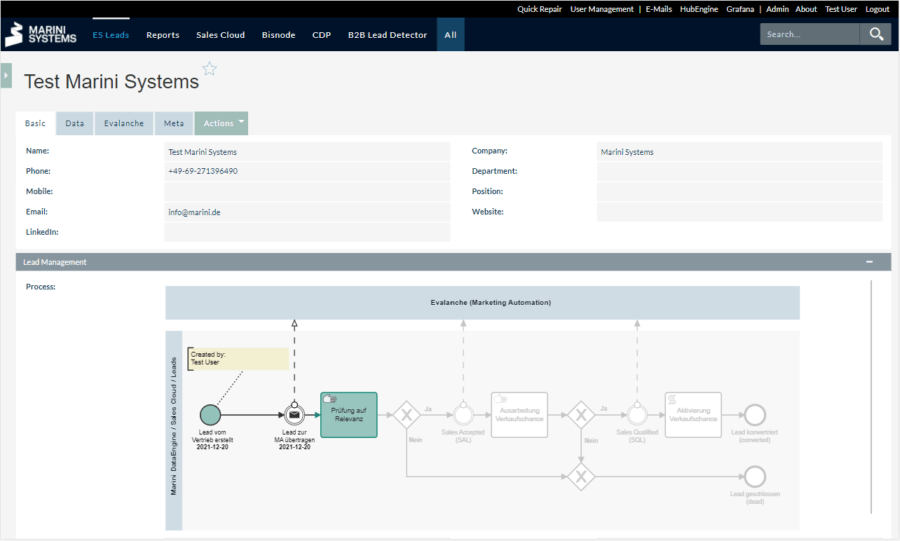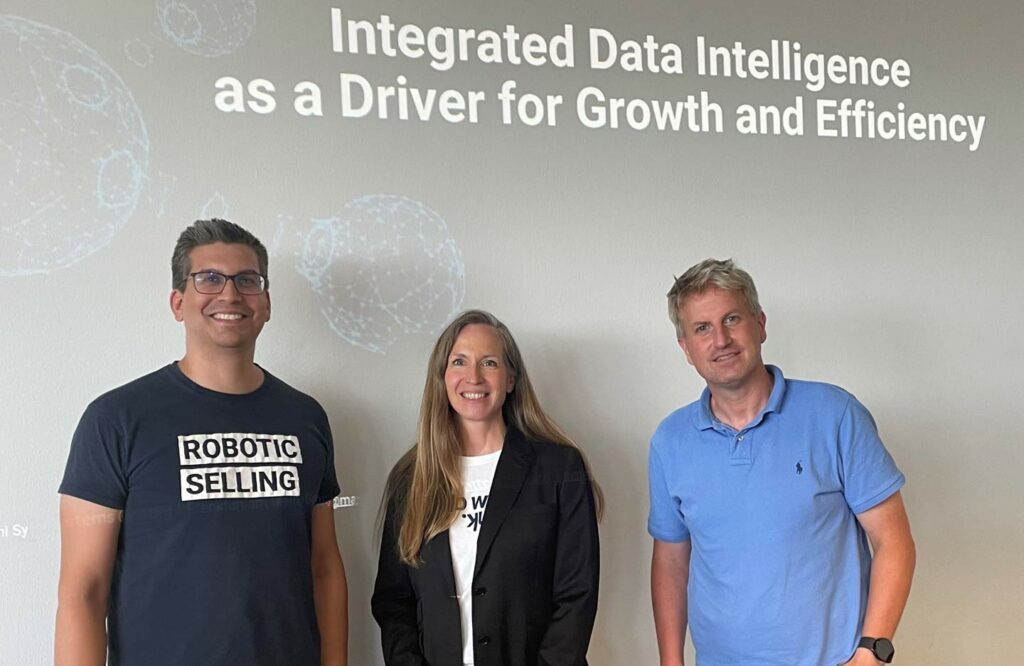Looking back, the marketing world used to be relatively simple. The number of channels and touchpoints was manageable, and customers had little overview of the entire market. Content was mainly in the form of spoken or printed words and images. Today, the world is much more complex for marketers. Customers have different expectations than before and behave differently. They use many more channels (multi-channel) and touchpoints. The answer: a Customer Data Platform.
Where do data silos come from in companies?
The transparency and search capabilities of digital channels give potential customers a comprehensive overview of the market and lead them to the competition with just one click. Spoiled by smartphones and tablets, ease of use and processes are the benchmark for the customer experience. Numerous tools and MarTech applications support marketers in the individual tasks along the customer journey. However, the disadvantage of the tool diversity is reflected in the system world of the companies. The data collected at the various touchpoints from the different phases of the customer process in marketing, sales and service is stored and managed in the different systems – but usually without connection and synchronization with each other. The result is many independent data sets that, stored separately, become more and more distant from each other. Duplicates and incorrect entries creep in. The errors relate both to the master data and to the transactin data or behavioral data of the customers. Correcting and maintaining the data across all systems is only possible with a great deal of effort.
Lead management in the dark
Many touchpoints are not even recorded. As a result, the world of the customer remains unfamiliar and nebulous to marketers. The effects on the customer experience are even worse. High-performing customers are not recognized and irrelevant offers are presented with inappropriate targeting. Poor efficiency of activities and wrong use of budgets are the result. This also translates into poor conversion rates and a high risk of customer churn.
With buyer persona profiles, marketing and sales can make assumptions about their desired customers and derive targeting, content, and activities from them. But they are denied complete verification of the assumptions. New leads and active existing customers are handed over to sales to develop until they are converted. The following exemplary challenges arise in the further processing of these leads:
- Leads must be routed to the right sales representative.
- Each sales representative handles the leads differently.
- Response time is too long. Leads are contacted too late.
- Leads are not processed and lose value.
- There is a lack of transparency about the current status of leads.
- Sales has a high effort for the administration of the leads.
- Marketing does not get feedback on the progress and quality of leads.
Marketing and sales management do not have a consistent view of their customers’ data. They are poking around in the fog and can only guess at suitable measures. What’s more, management lacks a solid basis for planning and decision-making. And to return to the point made in the introduction: Because the data is not consistent, sales cannot be supported with modern tools such as predictive analytics and machine learning assistants.
And now? We build a CDP, what else?
Before we look at the best of all worlds, first a short methodical look: In the “old world,” we thought in terms of systems and their boundaries. Today, we are in a different world and should also look at the sales world with a different perspective. What is important for your sales success?
- the data of your customers,
- the functions you want to perform with your data, and
- the processes that you and your customers go through.
Shouldn’t it be completely irrelevant which systems data was previously recorded and managed in, as long as your data is consistent and you have the functions available that lead you to success? And wouldn’t it be a good idea to automate the processes across all systems that are suitable for this purpose? More details on this in a moment. Basically, the term Customer Data Platform (CDP) has not yet been clearly defined and is intepreted differently by almost every company. Each company will combine the basic functions of a CDP differently in order to solve the respective tasks at hand. Almost any number of solutions for sales and marketing can be created from these basic functions.
The trick - a modular CDP
A modern CDP is a modular system which you implement your solution with. Exemplary sales goals are:
- Lead generation and new customer acquisition
- Lead management
- Cross- and up-selling
- Account-Based Marketing (ABM)
- Opportunity Management
- Customer Intelligence
- Customer Recovery
- Sales Control
It won't work without integration
The first step is to integrate the systems. If you want to replace old systems, this is of course an option. However, it is not a prerequisite for the use of robotic selling or for the use of a CDP. It should also be irrelevant whether your existing systems are already running in the cloud or “on-premises”. What matters is that the data from all relevant sales systems is integrated and kept consistent.
Integrating systems is no longer a problem. There are iPaaS applications (Integration Platform as a Service) via which synchronizations between systems can be easily implemented. Cumbersome software development is no longer necessary. Even the connection of exotic systems or in-house developments is not a significant challenge nowadays. We at Marini Systems call the connections to systems that can be used with a few clicks adapters.
When linking your systems, it is convenient to access existing adapters or to create new adapters easily and quickly. You simply select the respective adapters of your existing systems and the adapter for your CDP and define which data fields should be synchronized. You define whether the synchronization should be triggered by a specific event (e.g. reaching sales maturity, creation or change of a data field) or scheduled. Changing the systems to be synchronized or assigning the data fields can be done easily and without programming (no-coding approach).
Integration is more than just data transfer
What are the advantages of integration?
1. transparency and overview of the data
In your Customer Data Platform, you can see at field and list level which source system an item of information comes from. In a change log, you can track which changes were made to data, when they were made, and by whom. This is an ideal basis for a procedure directory, which is very important from a GDPR perspective. In any case, you benefit from an integrated system environment and consistent data. This gives you transparency and insights into the interests and behavior of your customers. You can optimize your offers, your activities and your approach and control your budget and sales activities in a targeted manner.
2. enrichment
In addition to cleansing your data, you can also enrich your data automatically. Simply choose the data service provider that can offer you a suitable added value and integrate it into your CDP and your processes. A suitable service provider whom we have had very good experiences with and who offers an API for the topics of Golden Record and Consumer Intelligence is, for example, Dun & Bradstreet.
3. processes across systems
A modern CDP must also support sales processes. If all relevant data is consistently integrated into your CDP, the sales-relevant processes will be mapped there and automated as much as possible. When a lead is transferred from a marketing automation platform to the CDP, the lead is assigned to the appropriate sales representative and he/she receives a notification to be able to react quickly.
Model processes in your CDP
For the processing of leads or existing customers, a process is stored that depicts the optimal support. The steps and the assigned tasks are defined in this process. If a new contact is imported manually or from a source system, such as a marketing automation platform, the workflow starts automatically, creates a data record and fills data fields. If manual intervention by a sales employee is required, the workflow stops and the responsible sales employee receives a corresponding note for a task and confirms the completion of the task, such as:
- Manual data enrichment or verification.
- Contact customer and determine need
- Create opportunity
easily and quickly.
At each step of the process, tasks that can be automated are performed in the background. These are tasks like:
Change lead status
Entries in the history
Create data records
Transfer data to other systems to trigger actions or further processes
Processes can be defined and depicted for different sales scenarios. You simply define the optimal process, which is displayed graphically in BPMN in the CDP and supports your sales department with the implementation in practice.
Further benefits of integrated process control in CDP
- The sales department is freed from tedious routine work
- The processing of leads is standardized and thus an optimal efficiency of the generated leads is achieved.
- All parties involved have transparency regarding the lead situation
- Marketing and sales are optimally connected on the system side
- The management receives an optimal basis for planning and decision making






